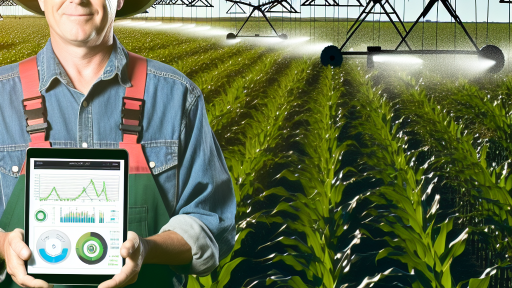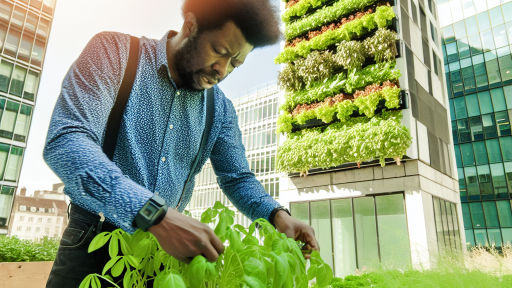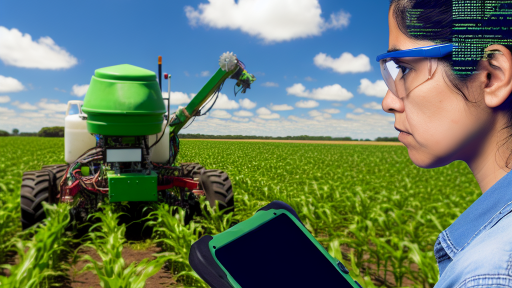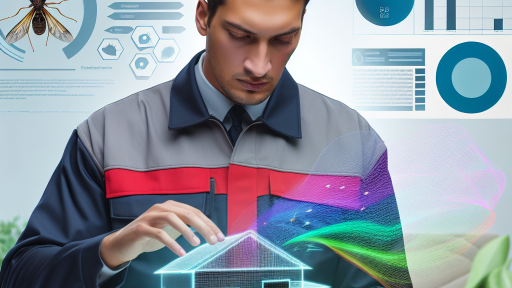Introduction to Soil Health and Crop Performance
Soil health is crucial for sustainable agriculture.
It directly impacts crop growth and productivity.
Healthy soil supports beneficial microorganisms and improves nutrient availability.
Additionally, soil structure influences water retention and drainage.
Farmers and agronomists increasingly focus on soil health metrics.
They seek to maximize crop performance through careful management.
The Importance of Soil Health
Healthy soil promotes strong root development in crops.
This, in turn, enhances nutrient uptake and plant resilience.
Soil rich in organic matter improves carbon sequestration.
Furthermore, healthy soil reduces erosion and promotes biodiversity.
This supports a robust ecosystem that can withstand pests and diseases.
Metrics for Assessing Soil Health
Several metrics help evaluate soil health effectively.
These include organic matter content, pH, and microbial activity.
Soil texture also affects water retention and aeration.
Moreover, nutrient levels, such as nitrogen and phosphorus, are critical.
Transform Your Agribusiness
Unlock your farm's potential with expert advice tailored to your needs. Get actionable steps that drive real results.
Get StartedTogether, these factors provide insight into overall soil quality.
The Link Between Soil Health and Crop Performance
Healthy soil translates to higher crop yields.
This relationship emphasizes the need for soil management practices.
Cover cropping and reduced tillage are beneficial techniques.
They enhance soil structure and minimize disturbance.
As a result, crops thrive and produce better quality yields.
Technological Advancements in Monitoring
Recent advancements in technology enable real-time soil monitoring.
Sensors can assess soil moisture, temperature, and nutrient levels.
These data help farmers make informed decisions.
For instance, precision agriculture uses this data to optimize inputs.
As a result, farmers can minimize waste and enhance productivity.
Importance of Sensors in Modern Agriculture
Enhancing Data Collection
Sensors play a critical role in gathering data throughout the agricultural process.
They collect real-time information about soil conditions, moisture levels, and crop health.
This data empowers farmers to make informed decisions based on precise metrics.
Consequently, they can enhance crop yield and reduce resource wastage.
Improving Soil Health
Soil health monitoring is vital for sustainable farming practices.
Sensors help detect nutrient levels and pH balance effectively.
This information guides farmers in applying the right fertilizers at the right time.
As a result, farmers can maintain balanced nutrient profiles in their soil.
Boosting Crop Performance
Crop performance improves significantly with sensor technology.
Farmers can use sensors to monitor weather patterns and optimize irrigation schedules.
Additionally, they enable quick responses to pest infestations or diseases.
Thus, sensors contribute to higher productivity and better quality produce.
Supporting Sustainable Practices
Sensors promote eco-friendly farming by minimizing chemical use.
Showcase Your Farming Business
Publish your professional farming services profile on our blog for a one-time fee of $200 and reach a dedicated audience of farmers and agribusiness owners.
Publish Your ProfileFarmers can apply water or fertilizers only when necessary, reducing waste.
This approach conserves natural resources and safeguards the environment.
Moreover, it helps in meeting regulatory requirements for sustainable agriculture.
Facilitating Precision Agriculture
Precision agriculture relies heavily on sensor data to function effectively.
The integration of sensors allows for targeted interventions in farming.
Farmers can achieve optimum conditions tailored to specific crop needs.
This strategy results in increased efficiency and profitability.
Types of Sensors Used for Soil Health Monitoring
Introduction to Soil Sensors
Soil sensors play a vital role in modern agriculture.
Farmers increasingly use these technologies to monitor soil health.
Consequently, they gain valuable insights into their crops’ needs.
Moisture Sensors
Moisture sensors measure the water content in soil.
These sensors help farmers optimize irrigation practices.
Therefore, they reduce water waste and enhance crop yield.
Types of Moisture Sensors
There are various types of moisture sensors available.
- Capacitive sensors measure changes in capacitance.
- Resistive sensors gauge soil resistance to electrical current.
- Tensiometers measure soil water tension.
Nutrient Sensors
Nutrient sensors assess soil fertility and nutrient levels.
These sensors often measure pH, nitrogen, phosphorous, and potassium.
Farmers use this data to make informed fertilization decisions.
Nutrient Sensor Technologies
Several technologies are employed for nutrient sensing.
- Optical sensors analyze light absorption in soil.
- Electrochemical sensors detect changes in chemical properties.
- Near-infrared sensors provide rapid assessments of soil composition.
Temperature Sensors
Temperature sensors monitor soil temperature at various depths.
Soil temperature influences seed germination and plant growth.
With this information, farmers can better plan planting schedules.
Temperature Measurement Techniques
Various techniques are used to measure soil temperature.
- Thermocouples provide accurate temperature readings.
- Infrared sensors offer non-contact temperature measurements.
- Thermistors provide high sensitivity to temperature changes.
Remote Sensing Technologies
Remote sensing offers a broader view of soil health.
This technology uses satellite and aerial imagery to gather data.
Farmers can monitor large areas quickly and efficiently.
Applications of Remote Sensing
Remote sensing improves various agricultural practices.
- It identifies nutrient deficiencies across fields.
- It monitors vegetation health and stress levels.
- It assists in detecting soil erosion risks.
Implications of Sensor Utilization
Utilizing sensors enhances soil management strategies.
Farmers can tailor their practices to specific crop needs.
Ultimately, this leads to improved soil health and crop performance.
You Might Also Like: Benefits of Automated Machinery in Modern Farming
Soil Moisture Sensors: Functionality and Benefits
Understanding Soil Moisture Sensors
Soyl moisture sensors play a vital role in precision agriculture.
These devices measure the water content in the soil.
They use various technologies to provide accurate readings.
Common types include capacitive, resistive, and tensiometric sensors.
Each type offers unique advantages and applications.
The Functionality of Soil Moisture Sensors
Soil moisture sensors work by detecting changes in soil conductivity.
This conductivity relates directly to the water present in the soil.
Some sensors transmit data wirelessly for easy monitoring.
Farmers can access this data in real-time, enabling swift decisions.
Additionally, they can integrate these sensors with irrigation systems.
Showcase Your Farming Business
Publish your professional farming services profile on our blog for a one-time fee of $200 and reach a dedicated audience of farmers and agribusiness owners.
Publish Your ProfileThis integration promotes efficient water usage across fields.
Benefits of Using Soil Moisture Sensors
Employing soil moisture sensors enhances crop performance.
They help prevent overwatering or underwatering crops.
This optimization leads to healthier plants and increased yields.
Using these sensors reduces water wastage significantly.
Moreover, they contribute to sustainable farming practices.
Farmers gain insights into soil health over time.
They can make informed decisions based on historical data.
Adoption of Soil Moisture Sensors in Agriculture
Many farmers are now adopting soil moisture sensors globally.
For example, AgriTech Solutions has developed innovative sensor technology.
These advancements are helping farmers increase efficiency and reduce costs.
Farmers are seeing improvements in crop quality and resource management.
Investing in these technologies often results in a quick return on investment.
Gain More Insights: Automated Machinery for Soil Health Monitoring
Nutrient Sensors: Measuring Soil Fertility
Introduction to Nutrient Sensors
Nutrient sensors play a vital role in modern agriculture.
They provide real-time data on soil fertility levels.
This information aids farmers in making informed decisions.
Furthermore, accurate readings enhance crop performance.
Types of Nutrient Sensors
Several types of nutrient sensors exist on the market.
Each type uses different technologies to measure soil properties.
- Electrochemical sensors detect nutrient levels based on electric signals.
- Optical sensors analyze light absorption to assess nutrient content.
- In-situ sensors take measurements directly in the soil environment.
The Role of Sensors in Precision Agriculture
Nutrient sensors are essential for precision agriculture practices.
They enable targeted fertilization, minimizing excess use.
By applying precise amounts of nutrients, farmers can reduce costs.
This also helps protect the environment from chemical runoff.
Benefits of Using Nutrient Sensors
Utilizing nutrient sensors offers numerous benefits to farmers.
- Improved crop yields can be achieved through optimized nutrient management.
- Soil health is enhanced as nutrient levels are maintained effectively.
- Data-driven decisions lead to increased operational efficiency.
Future Trends in Nutrient Sensing Technologies
The future holds promising developments for nutrient sensing technologies.
Advanced sensors will likely become more affordable and accessible.
Integration with AI and data analytics will enhance usability.
As a result, farmers will benefit from enriched decision-support systems.
Delve into the Subject: Drones and Remote Sensing in Modern Farming
Temperature Sensors and Their Impact on Crop Growth
Importance of Temperature in Agriculture
Temperature significantly influences crop growth and development.
It affects germination rates, root development, and flowering times.
Extreme temperatures can cause stress to plants, reducing yield.
Therefore, maintaining optimal soil temperatures is crucial.
Role of Temperature Sensors
Temperature sensors provide real-time data on soil conditions.
They enable farmers to monitor temperatures accurately.
By using these sensors, growers can make informed decisions.
Data from these sensors helps to optimize irrigation and planting times.
Types of Temperature Sensors
Various types of temperature sensors are available for agricultural use.
- Thermistors are sensitive and provide quick responses.
- Thermocouples are durable and suitable for harsh environments.
- Infrared sensors can measure surface temperatures without contact.
Impact on Crop Management
Temperature sensors help in precision agriculture practices.
Showcase Your Farming Business
Publish your professional farming services profile on our blog for a one-time fee of $200 and reach a dedicated audience of farmers and agribusiness owners.
Publish Your ProfileFarmers can adjust their strategies based on temperature data.
This guidance leads to improved crop management decisions.
Consequently, it translates into better yields and profitability.
Case Studies of Successful Implementation
Many farmers have successfully integrated temperature sensors.
For instance, Claire’s Farm reduced crop losses using these devices.
She began monitoring soil temperatures during planting season.
This adjustment boosted her corn yield by 15% last year.
Another example is Green Valley Orchards, which uses thermocouples.
They monitor temperatures in their peach orchards throughout the year.
This practice has led to a 20% increase in fruit quality.
Future Trends in Temperature Sensing Technology
Temperature sensing technology continues to evolve rapidly.
The integration of IoT devices improves data collection efficiency.
Farmers can access temperature data from their smartphones now.
This trend enhances their ability to respond to environmental conditions.
You Might Also Like: The Benefits Of Agricultural Robotics
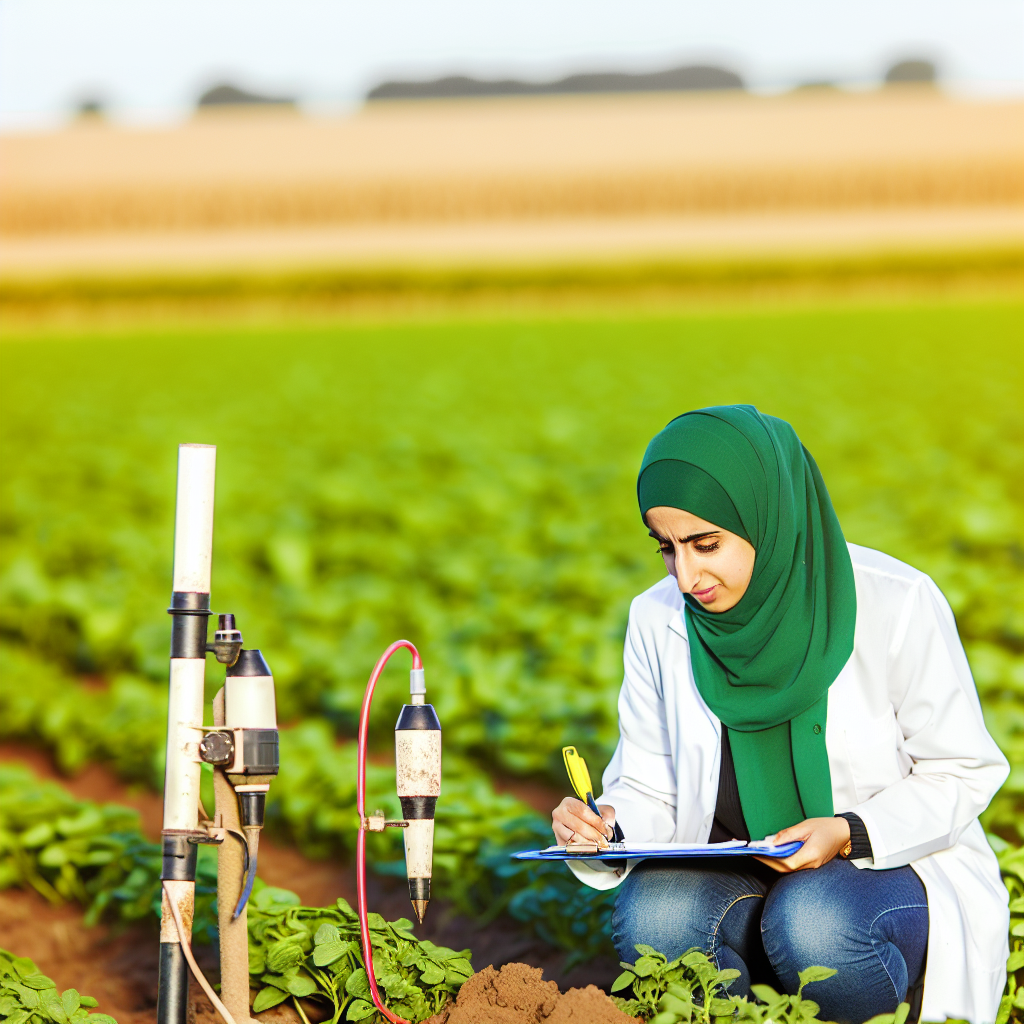
Integrating Sensor Data with Precision Agriculture Techniques
The Role of Sensors in Agriculture
Sensors play a crucial role in modern agriculture.
They provide real-time data on soil conditions and crop health.
This information enhances decision-making processes for farmers.
Consequently, it leads to improved crop yields and resource management.
Types of Sensors Used in Agriculture
Different types of sensors contribute to agriculture’s efficiency.
Soil moisture sensors help monitor water levels in the ground.
Environmental sensors track temperature, humidity, and light levels.
These devices gather vital data for managing crops more effectively.
Benefits of Integrating Sensor Data
Integrating sensor data into farming practices offers numerous advantages.
- It allows for targeted irrigation, reducing water waste.
- Farmers can detect potential pest infestations early.
- Crop nutrient levels can be accurately assessed and adjusted.
- Yield predictions become more reliable and precise.
Combining Sensor Data with Smart Farming Techniques
Smart farming techniques complement sensor data integration.
For instance, farmers can use drones to collect aerial imagery.
This imagery provides additional insight into crop health.
Moreover, machine learning algorithms can predict crop performance based on historical data.
Challenges in Sensor Integration
Integrating sensor data does pose challenges for farmers.
High initial costs can deter some growers from adopting new technologies.
Additionally, data accuracy and reliability can vary based on sensor quality.
Farmers must also learn how to interpret the data effectively.
The Future of Sensor Technology in Agriculture
The future of sensor technology looks promising for agriculture.
Advancements will continue to make sensors more affordable and efficient.
As technology evolves, farmers will utilize sensors for precision practices.
This evolution will pave the way for sustainable farming solutions.
Case Studies: Successful Implementation of Soil Sensors
Precision Agriculture at Green Acres Farm
Green Acres Farm adopted soil sensors to enhance crop management.
They installed advanced moisture sensors throughout their fields.
These sensors provided real-time data on soil moisture levels.
As a result, the farm reduced water usage significantly.
Showcase Your Farming Business
Publish your professional farming services profile on our blog for a one-time fee of $200 and reach a dedicated audience of farmers and agribusiness owners.
Publish Your ProfileThis approach saved resources and improved crop yields.
Furthermore, it minimized the environmental impact of farming.
Innovation in Citrus Farming
Sunny Orchard utilized soil sensors to optimize their citrus production.
They focused on nutrient management for their orange trees.
Soil sensors measured key nutrients like nitrogen and phosphorus.
This data allowed precise adjustments to fertilization schedules.
Consequently, the trees thrived with improved fruit quality.
The orchard experienced higher market prices due to premium fruits.
Monitoring Soil Health at Riverbend Vineyard
Riverbend Vineyard incorporated sensors to monitor soil health effectively.
They tracked microbial activity and organic matter levels.
This information guided decisions on cover cropping practices.
As a result, the vineyard enhanced soil fertility organically.
Additionally, they increased resilience to pests and diseases.
Ultimately, the vineyard reported a significant increase in grape quality.
Successful Adoption by Urban Farmers
Urban Roots implemented soil sensors in rooftop gardens and community farms.
These sensors provided critical data on soil conditions in small spaces.
Urban farmers utilized the data to optimize planting schedules.
This led to more efficient use of limited urban resources.
Moreover, urban gardens produced higher yields than before.
This success encouraged community engagement and educational programs.
Future Trends in Soil Health Sensing Technology
Advancements in Sensor Technology
The evolution of soil health sensing technology is rapidly advancing.
Innovative sensors now offer real-time data collection.
These sensors utilize various technologies such as IoT and AI.
This integration enhances data accuracy and reliability.
Moreover, wireless sensors are becoming increasingly accessible.
This increase simplifies the monitoring process significantly.
Additionally, low-cost sensors are emerging in the market.
These options democratize access to soil monitoring tools.
Integration with Agricultural Practices
Farmers are starting to incorporate these technologies into their daily operations.
The use of sensors allows precise application of fertilizers.
This precision reduces waste and increases efficiency.
Furthermore, sensors assist in monitoring crop health and nutrient levels.
This real-time feedback leads to informed decision-making.
As a result, yield predictions become more accurate.
Ultimately, this technology promotes sustainable farming practices.
The Role of Data Analytics
Data analytics plays a crucial role in maximizing the potential of soil sensors.
Advanced algorithms assess the data collected efficiently.
This process identifies trends and anomalies in soil health.
Farmers can draw insights from this analysis effectively.
Predictive modeling also helps in anticipating future soil conditions.
Showcase Your Farming Business
Publish your professional farming services profile on our blog for a one-time fee of $200 and reach a dedicated audience of farmers and agribusiness owners.
Publish Your ProfileMoreover, integrating climate data with soil analytics enhances precision.
This integration allows for informed decisions based on comprehensive insights.
Future Market Dynamics
The market for soil health sensing technology is expected to grow exponentially.
With increasing awareness of sustainable agriculture, demand will rise.
Additionally, regulatory frameworks are evolving to support these technologies.
Businesses are investing in research and development efforts.
This focus aims to create more effective sensing devices.
Moreover, collaborations between tech companies and farmers are increasing.
These partnerships enhance the development of user-friendly solutions.
Challenges Ahead
Despite the advancements, challenges remain in the industry.
One major hurdle is data security and privacy concerns.
Farmers worry about who accesses their sensitive information.
Moreover, there is a learning curve associated with adopting new technologies.
Training programs will be essential for effective implementation.
Additionally, ensuring compatibility across various devices is crucial.
Addressing these challenges will pave the way for broader adoption.
Additional Resources
IoT in Agriculture: 9 Technology Use Cases for Smart Farming (and …

